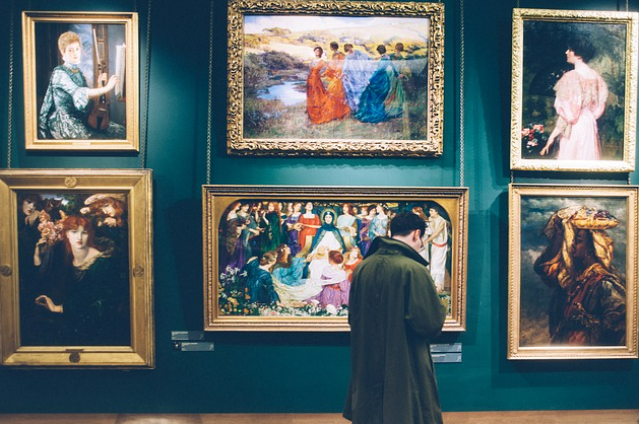
“What+is/are+subject+?” forms the most elemental question form about any subject matter.
However, in Arts, this question formation is partially complete, losing the very essence of the question.
The more productive question would be “What is art for you?”
Art is a subject among a few others where the exploration is endless.
Every new day, with every new work, from every new artistic muscle, comes a new definition to the subject.
Reframed, yet a question so simple takes an artist’s lifelong time to find an answer to match even his self-satisfaction.
As for me, the journey I have had in the art field has helped me to discern two concepts concomitant to the subject.
Firstly that “Art is limitless and immeasurable”.
Art which is an end product of emotions is cosmic. The key ingredients of emotions are in itself fathomless.
Emotions an abstract is another subject where exploration is endless.
Emotions of love, fear, anger joy, desire, creativity and even sensuality are a sizeable part of our life.
Now can we measure them in terms of degrees?
Emotions are something to be only felt without curtailment and so is art.
Other is that “Art is a mirror mounted door to its viewers”.
An artwork as spelt out by the artist isn’t the only door to enter it.
Every artwork acts as a mirror to self-reflect and then opens a door to another world to its observer, which belongs only to him.
The same piece of artwork, with every new audience to it, gives a new meaning, a new story to it.
The observer perceives his art within the artist’s work.
The journey to decipher the question “what is art for you?” is a never-ending process.
It’s redefined every time the artist takes a new step in the field of art.
Another subject of interest is to acknowledge the unspoken agreement between the artwork to its creator and its viewers.
A pactum to pass on the carte-blanche from its creator to its viewers.
An artist spends a timeline with its creation, there’s a beauty of struggle in it, many provoking thoughts throughout the journey and imagination as cosmic as it can be.
He shares a beauteous affinity with the canvas and colours, one presumably without any emotional expectation in return.
As and when the artwork is brought to fruition, a whole new world opens up for it, now not just confined to its creator's musing.
Words you can’t understand, brush strokes one can’t decipher, moves you can’t copy, yet everything makes sense as long as you connect to the artist and the art.
As widely seen, there are two approaches to delivering the art to the audience.
One is where the creator wishes for the viewer to stick to his perception and take a set path to the artwork, the artist has already carved a door for you to set foot in and be part of the artist’s journey from turning a blank canvas to get it mounted on the wall.
Another is where the artist holds back and lets the audience open up a space to walk the road yet untravelled and have an experience of his own.
The creation so far was in pactum with the creator as he exerted his influence on you to take his approach to read his work.
But this is when Wanderer-The Mind comes into play, earlier which was influenced by a set line of thinking, as unfolded to a view full of blended colour, filled with varied emotions now interprets the work to assimilate in his way.
He draws a parallel with it in accordance to his personal life and preference, springing out a meaning from it which could be highly resting on the cause and condition of the individual.
For some, the subject of the artwork will be a comfort zone, for some a subject of criticism as it may have raised many questions for them themselves.
Some will take a deep dive into the depths of the background, while some will struggle with the focused subject and won’t get to go beyond.
All this leaves us with yet another question, whether the perspective of the creator or that of its spectator is important?
